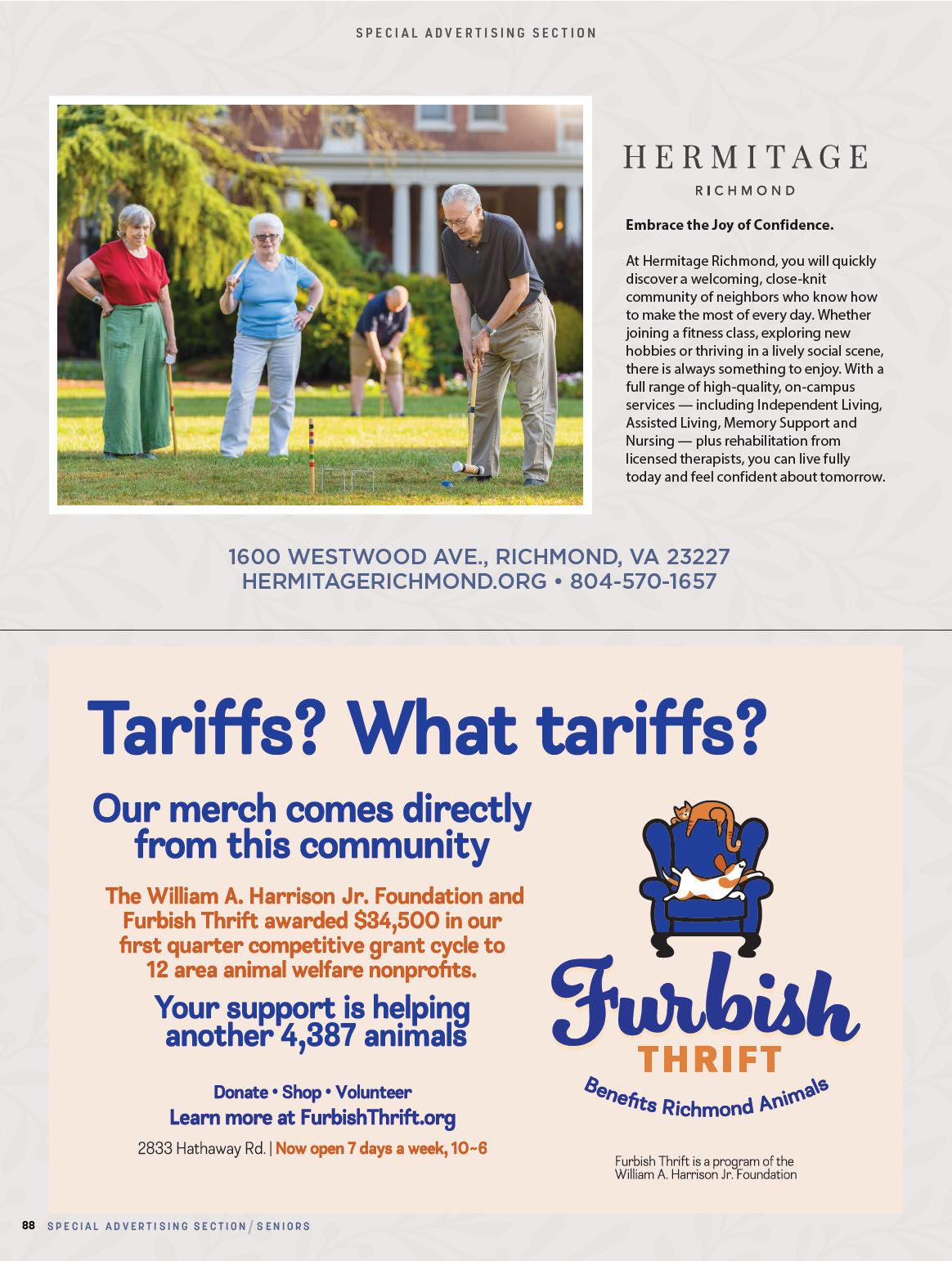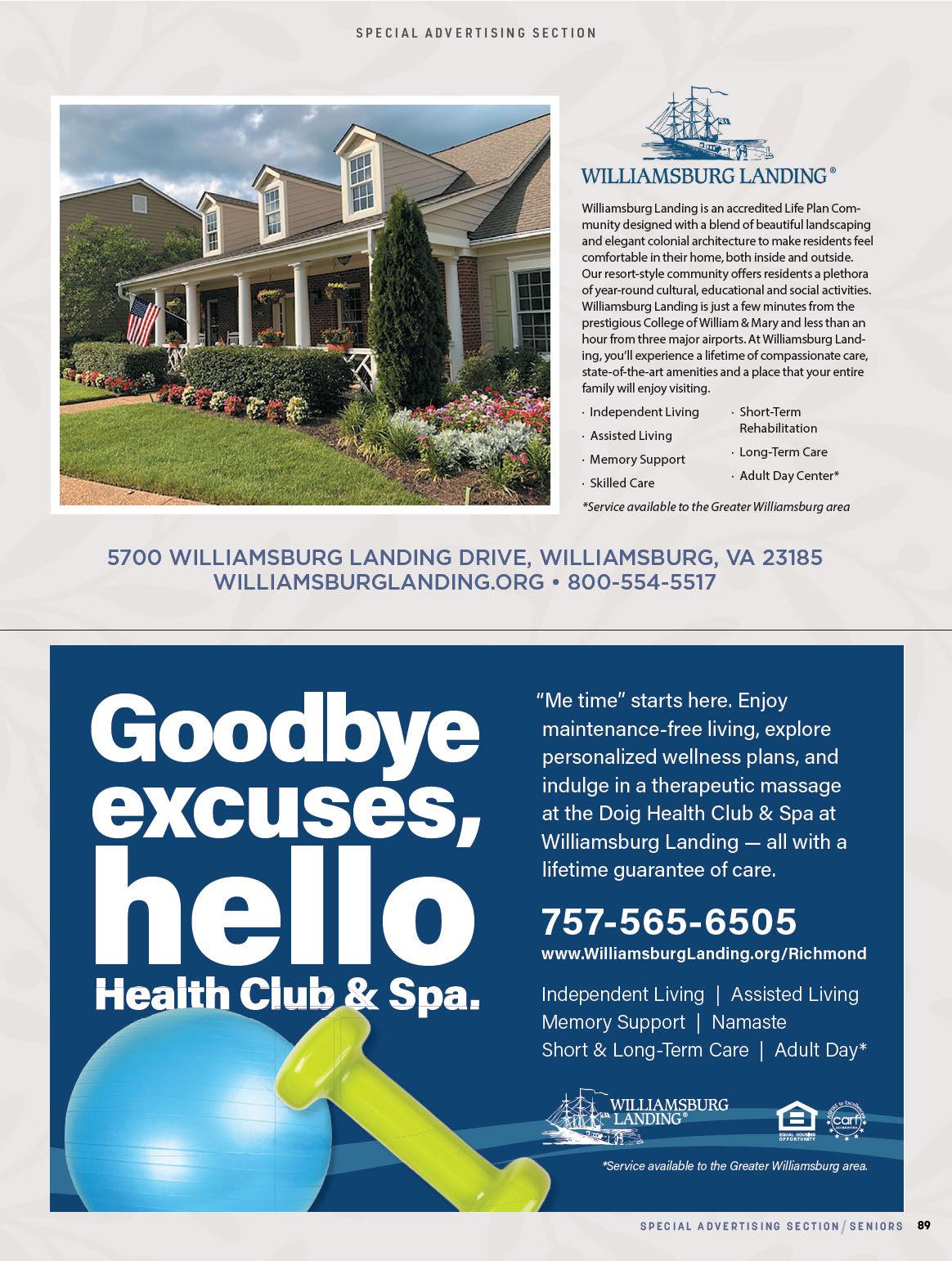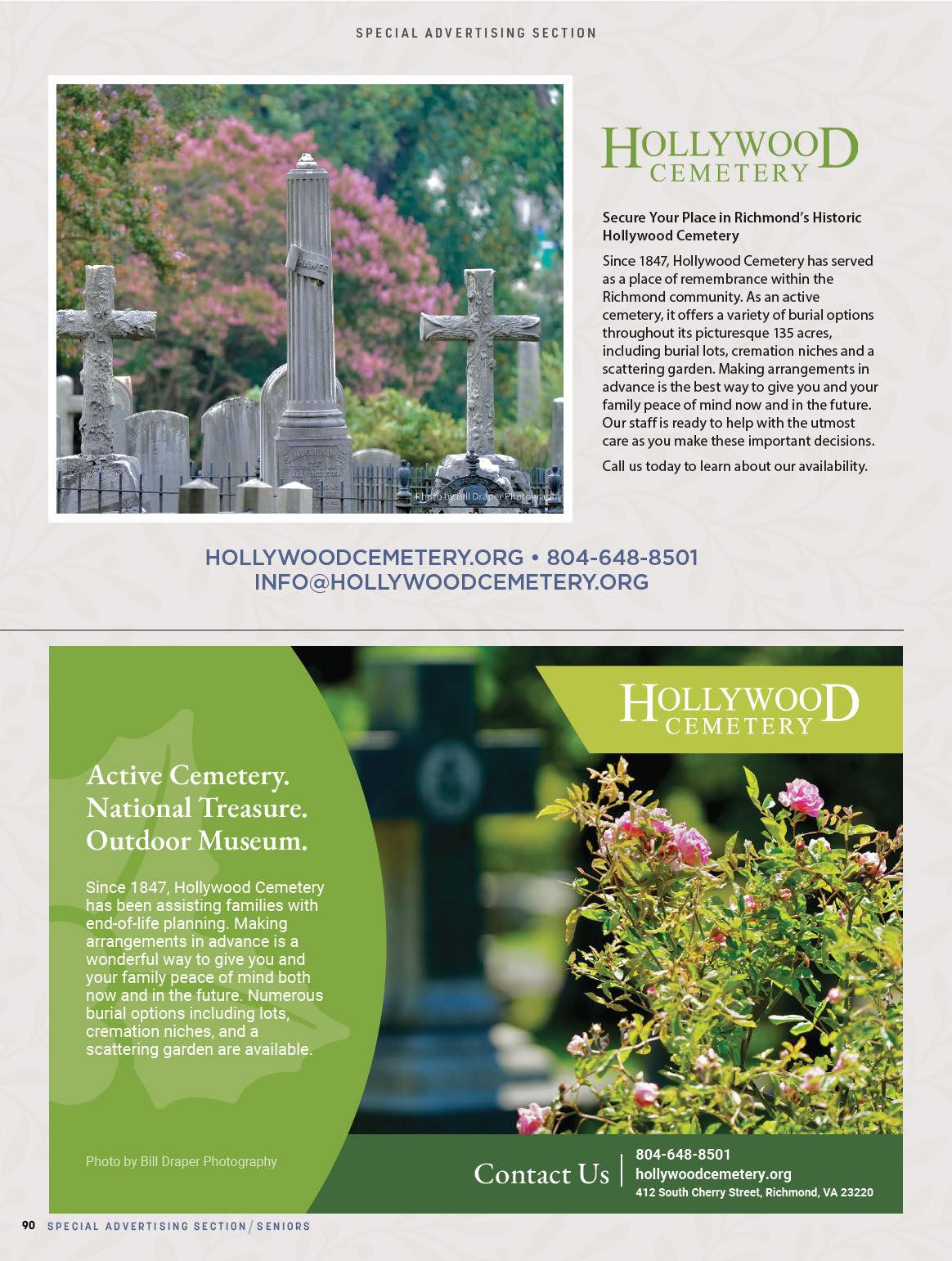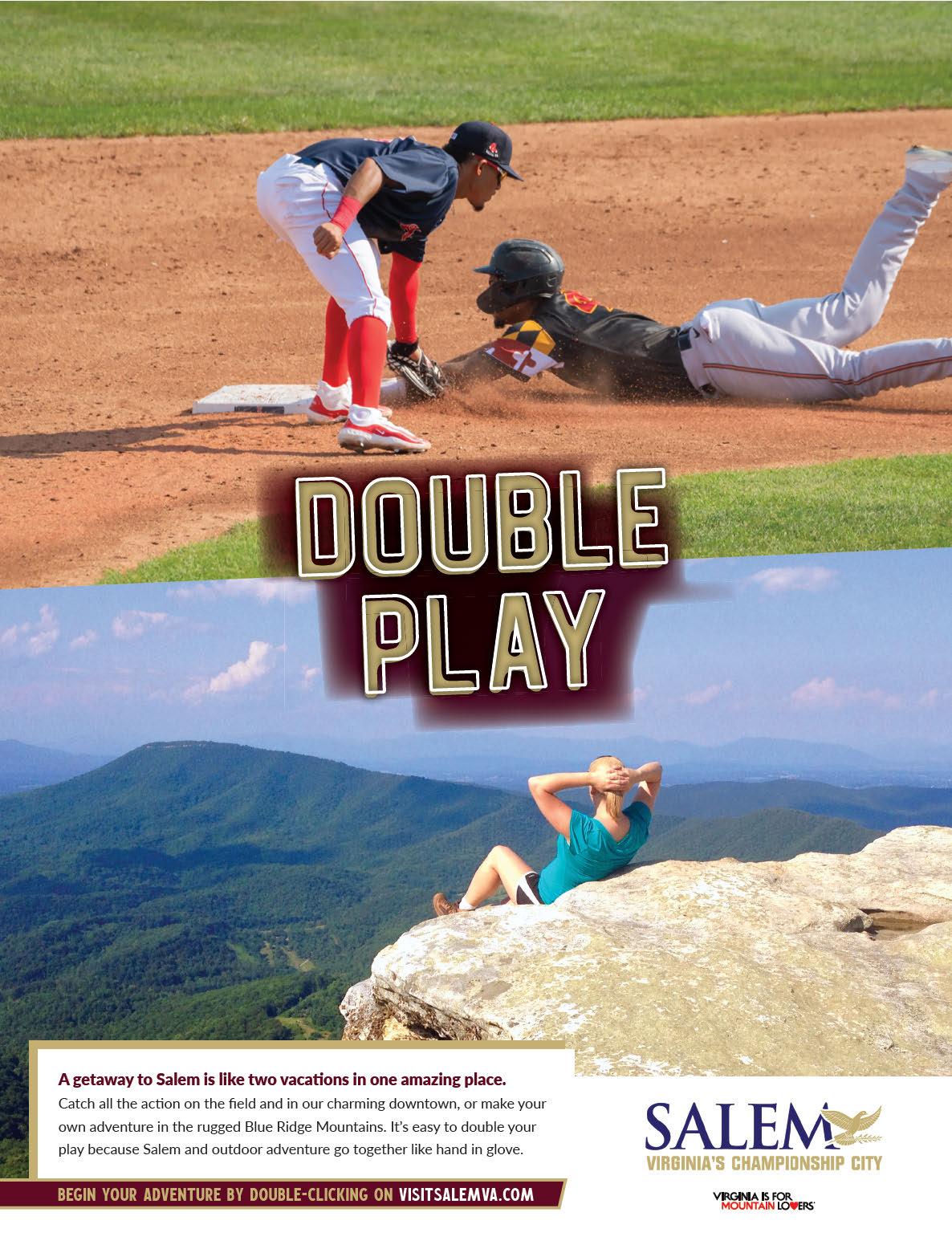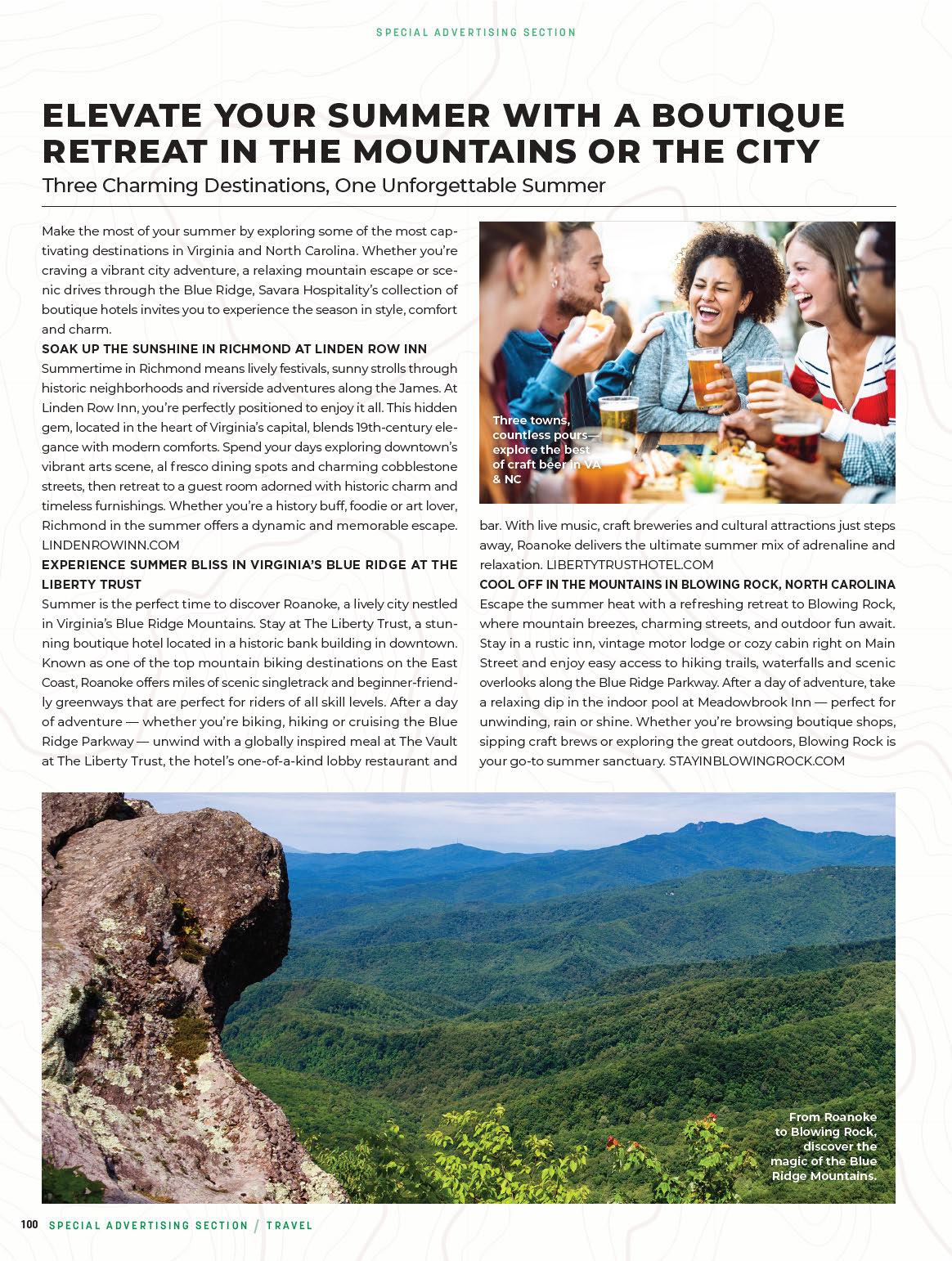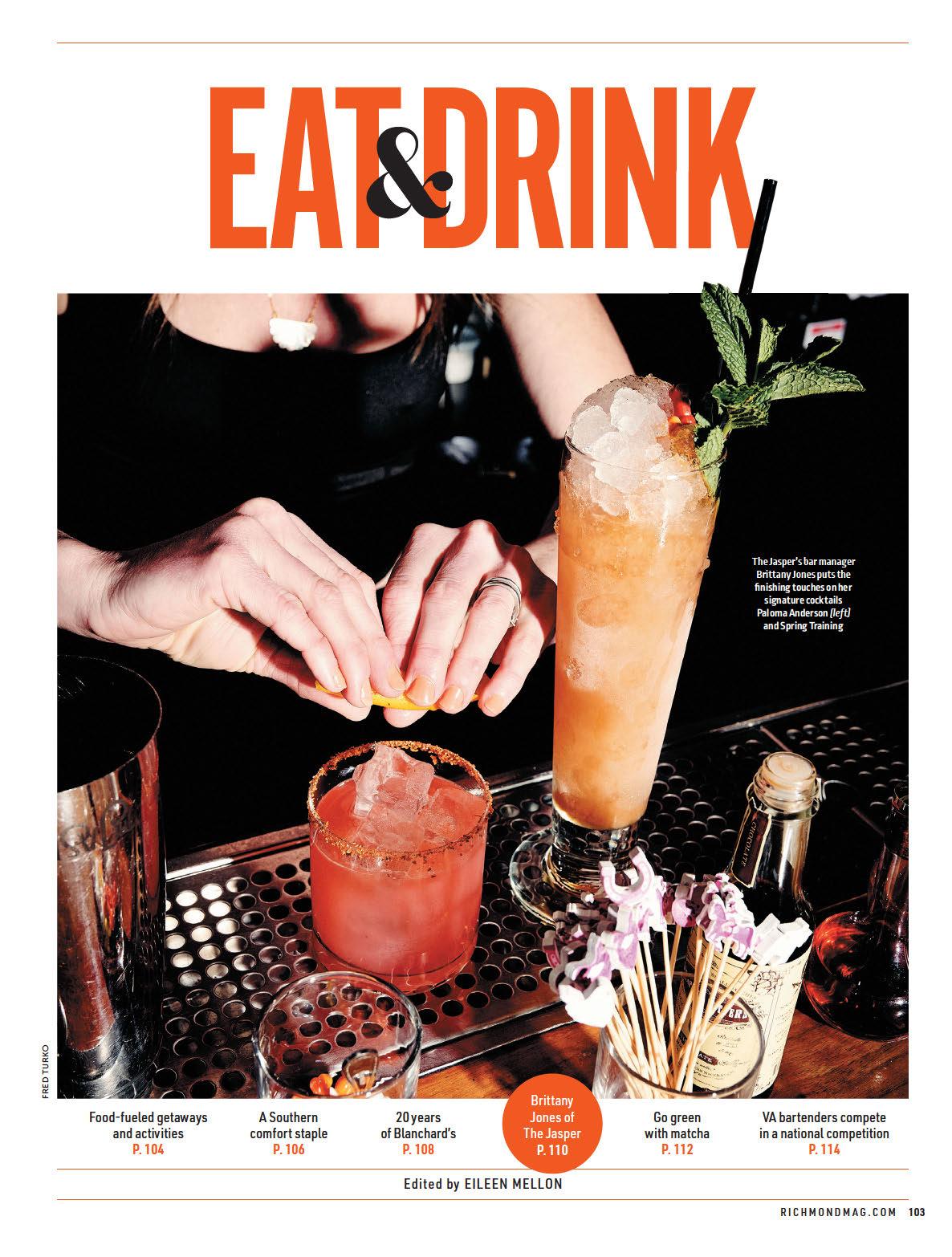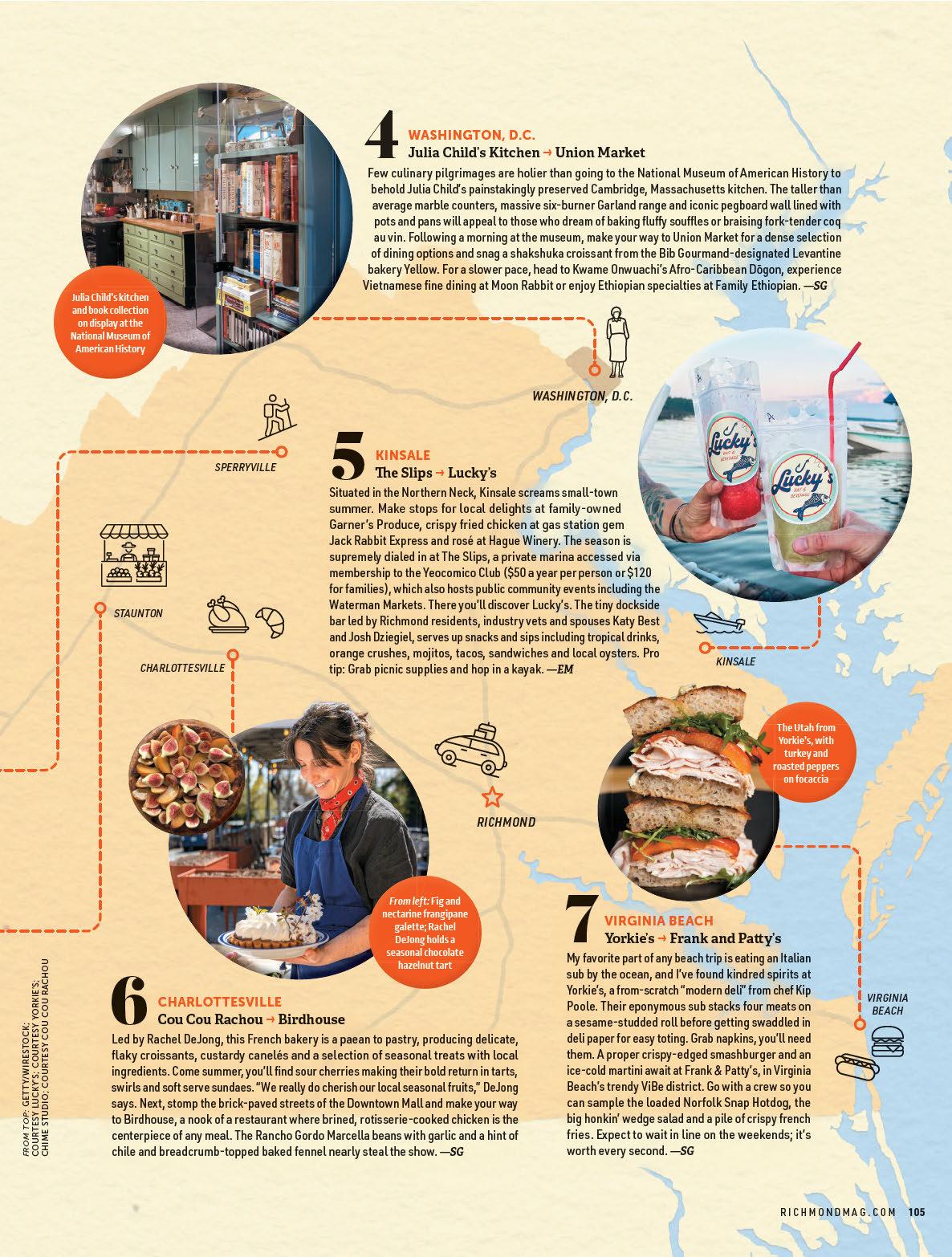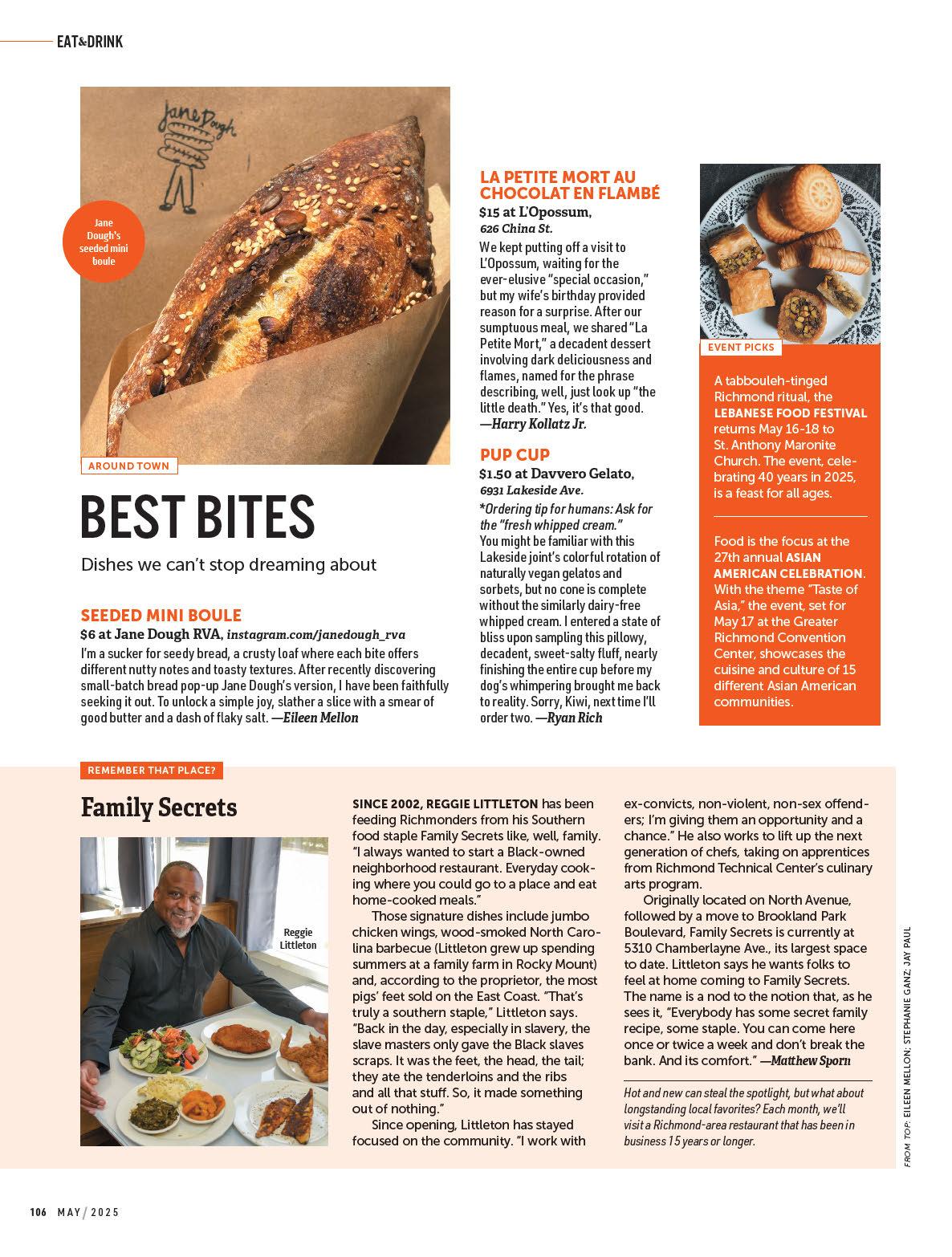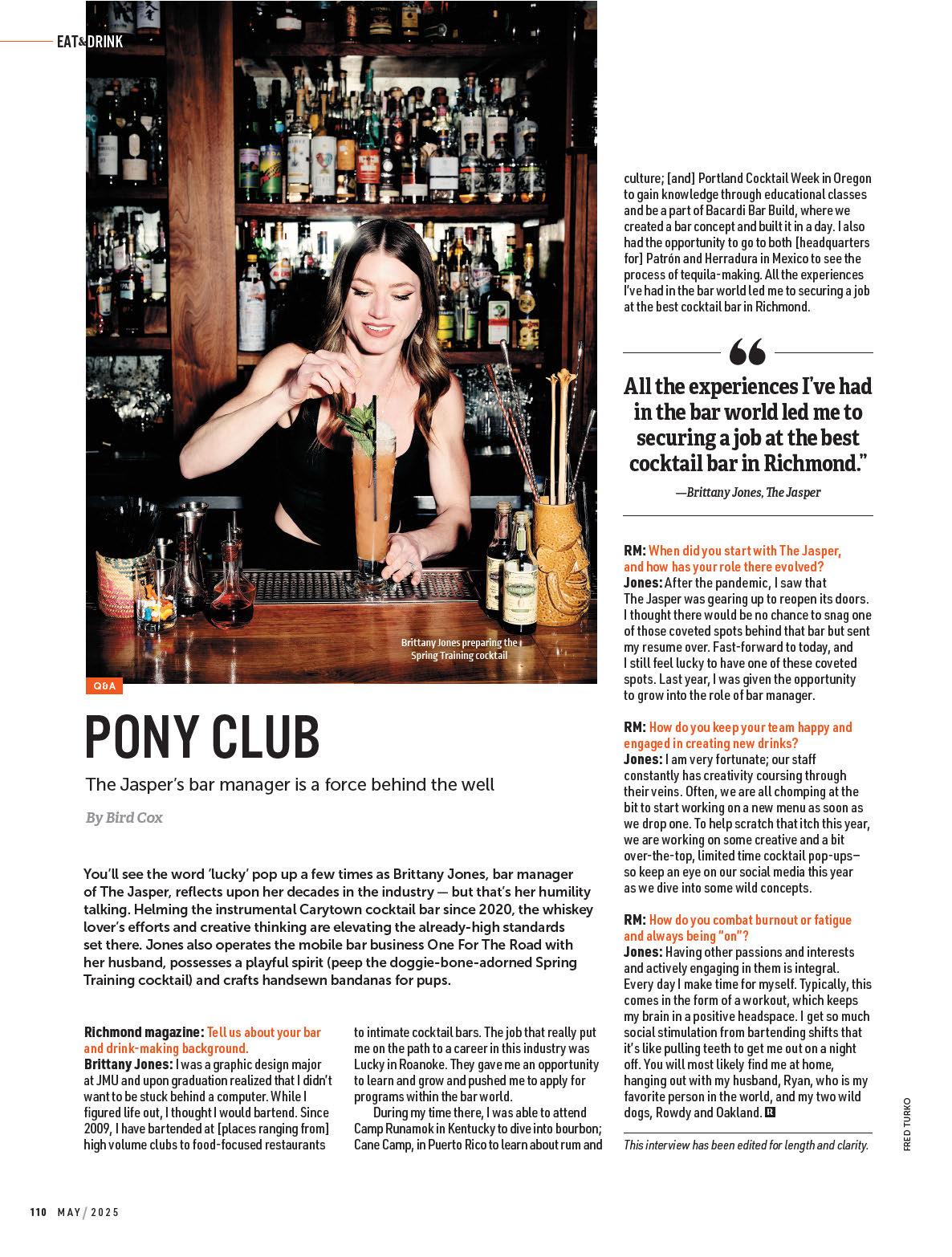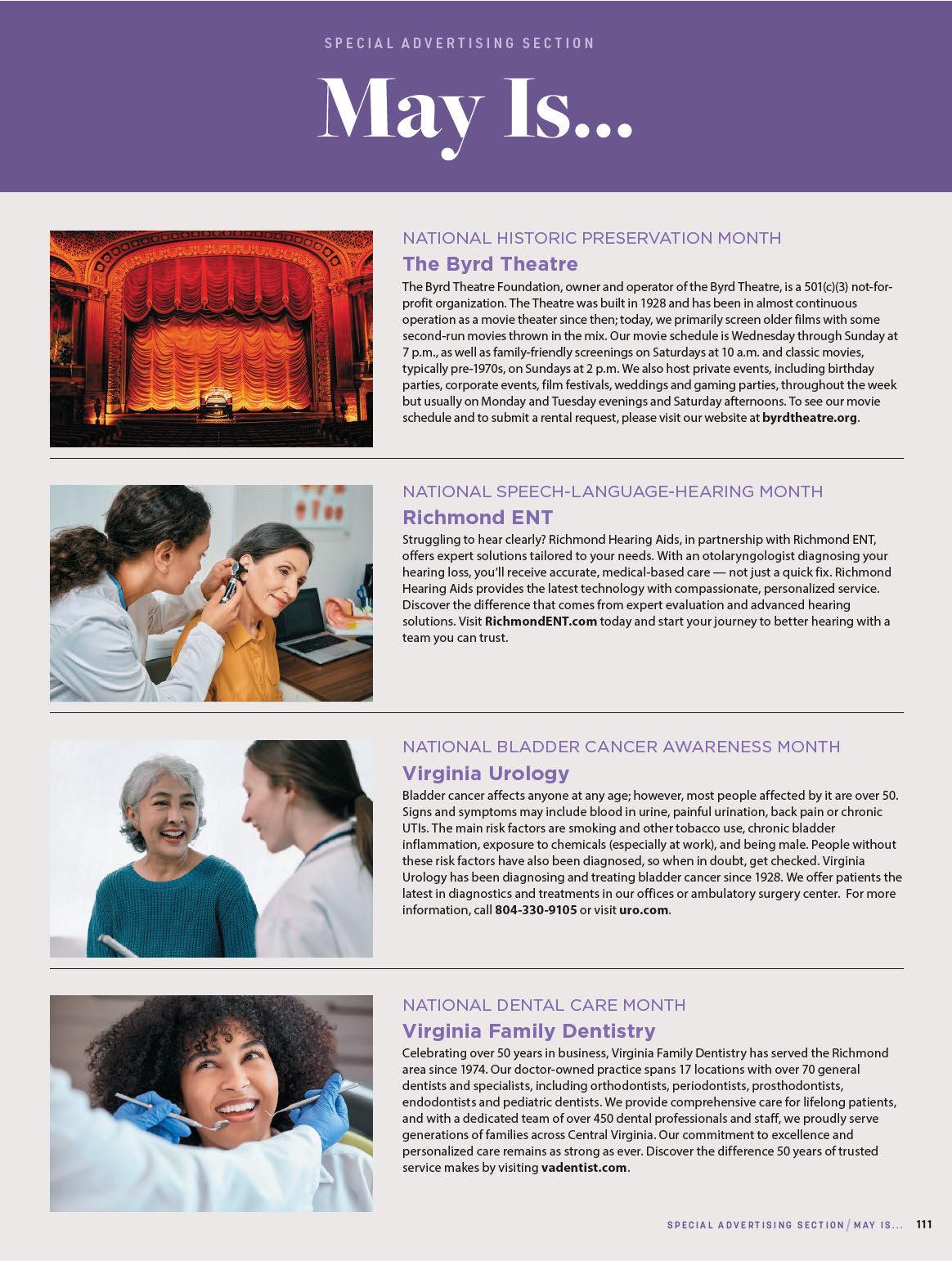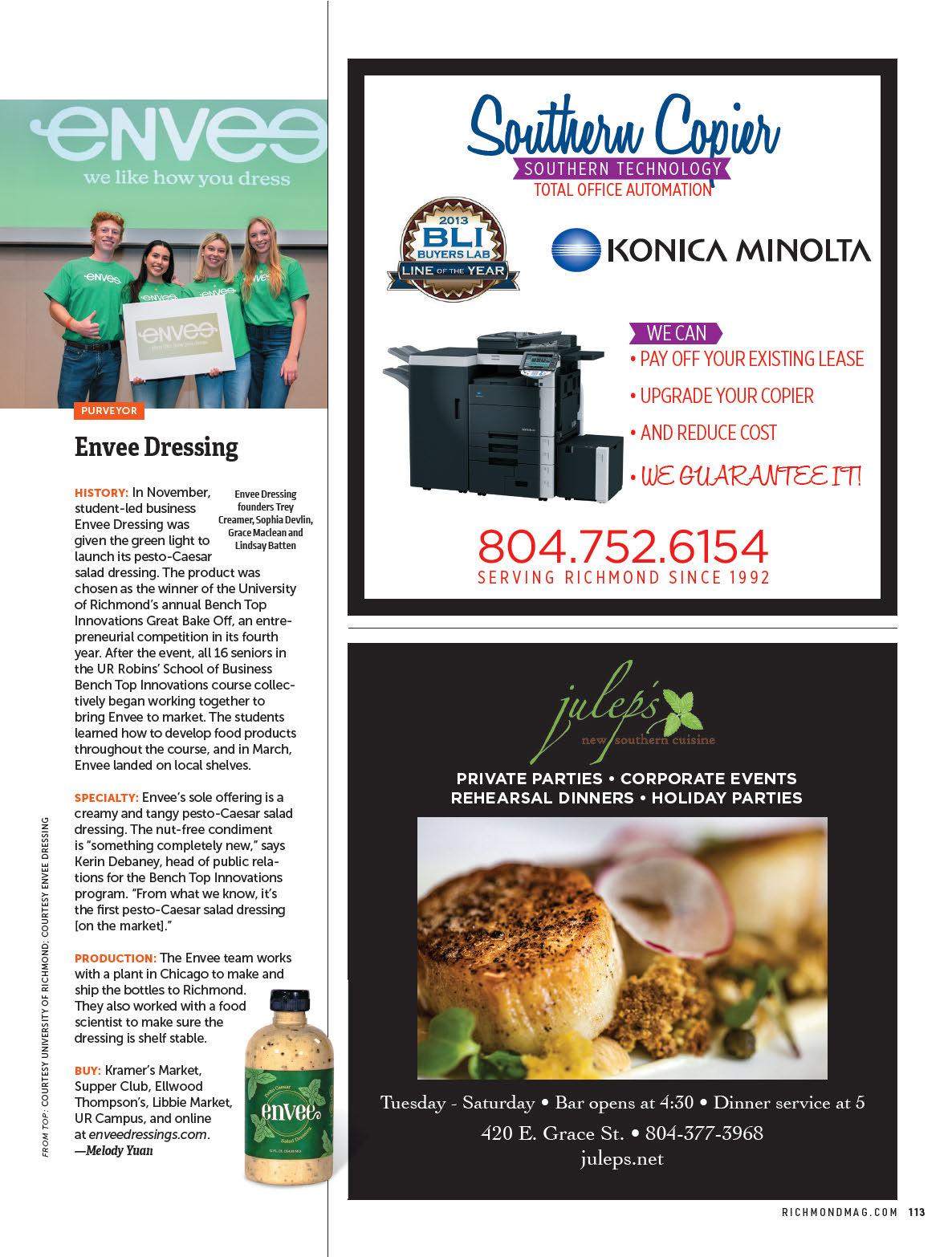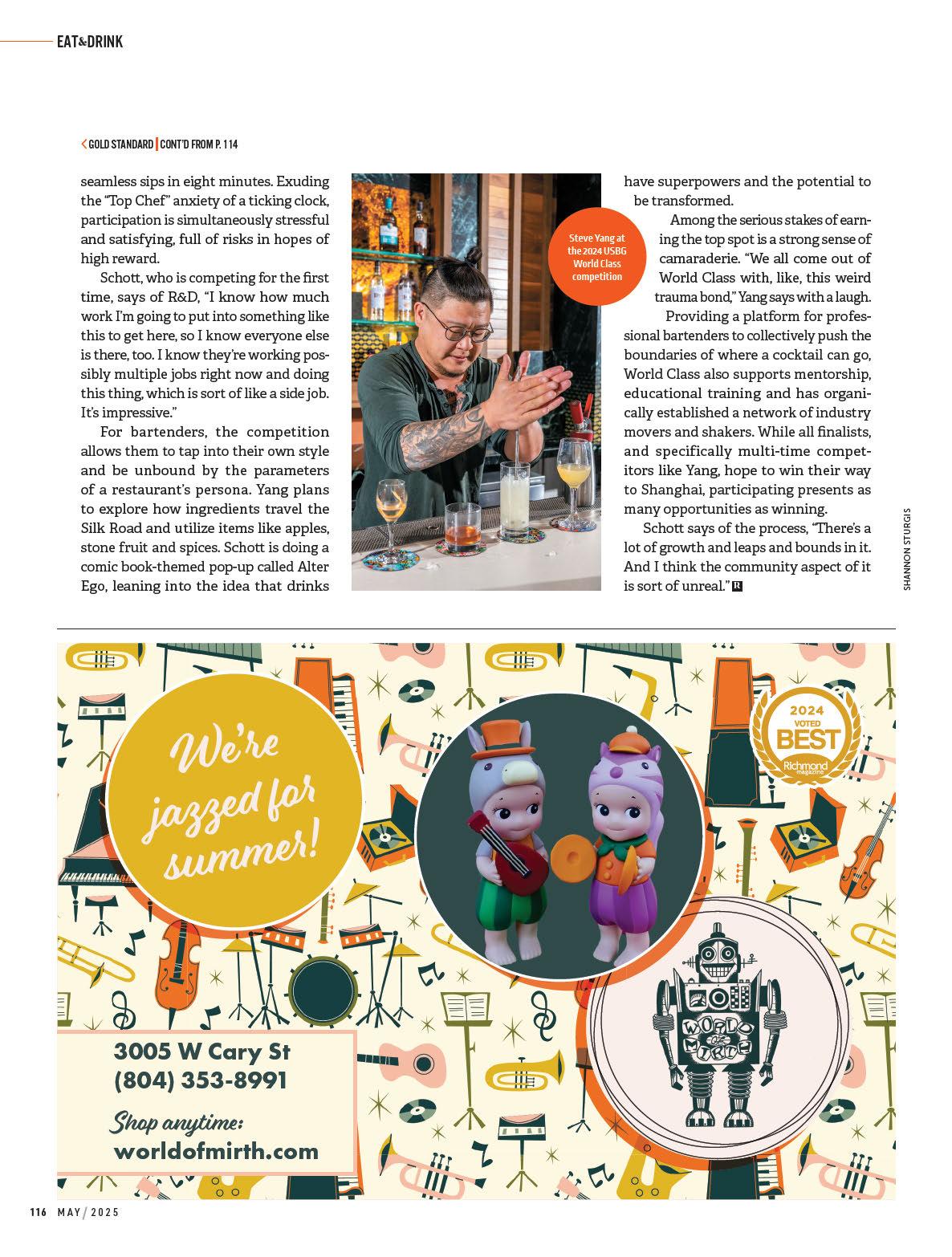














































































































A nonprofit games club wants to make chess for everyone
By Alyssa Hu on
Tucked away in the annex of the Richmond Public Library ’s main branch on Franklin Street, around 35 chess enthusiasts spanning generations listen intently as Spenser Kearns relives a lost match against a chess master. Participants occasionally chime in, asking why he made certain moves, or protest as he shows them some of his fatal mistakes.
Kearns was speaking to members of RVA Pieces, a nonprofit chess club with a goal of growing and maintaining the city’s chess community. e free-to-join club meets three times a week around town: Jackson Ward’s GWARbar is home to Monday night meetups, ursday nights are spent at Home Sweet Home in Carytown and Saturday a ernoon’s meetups are held at the library in winter months, but they transition to Monroe Park as temperatures rise.
For chess newcomers, the group hosts bimonthly beginner meetups alternating between Final Gravity Brewing in Lakeside and Manchester’s Benchtop Brewing every other Wednesday. Another event series includes other games, such as Settlers of Catan and Mario Kart, played at Gallery5 in Jackson Ward monthly.
Tournaments are a highlight for club


members, who currently hold small competitions biweekly at the Carytown Publix with a $5 entry; as the group grows, leaders hope to establish large and frequent contests in town. “Most tournaments you go to, it’s like $100 bucks just to enter and it takes up your whole weekend,” says Kearns, the group’s president. “We want to make chess for everybody, so it’s five bucks, show up, play one [game].”
Miguel Garcia, a children’s mental health counselor in Richmond, a ends club meetups and occasionally brings his patients, finding a benefit in the skills learned from playing chess such as following instructions and thinking before acting. “When they figure out how to play, they can realize that the game can be a sample of real life,” Garcia says. “If you move like this, maybe it’s a wrong move and you’re going to have some negative

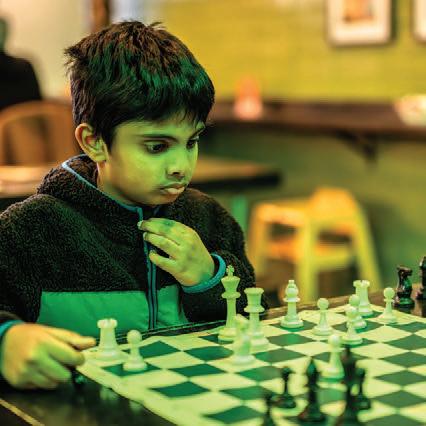
consequences in the game or in life.”
e club’s community outreach director, Jared omson, moved from Sea le to Richmond two years ago and initially started playing to meet people and polish his skills. Now, as a board member, he’s working on creating scholarships for children of lower-income families to participate in tournament play. Increasing access for Richmond youth, he says, is one of the most appealing parts of the club.
RVA Pieces officially became a nonprofit in 2023, and its leadership is aiming to further their philanthropic mission through grants while introducing new scholarships and improving conditions for members with upgrades like electronic game boards and be er facilities when playing in Monroe Park. “We want to make Richmond one of the best places to be if you’re a chess player,” Kearns says. R

VCU researchers sew a better method of nerve repair
By D. Hunter Reardon

During the seventh century, Alexandrian scholar Paulus Aegineta discovered that it was possible to heal nerves by suturing them together. Surgical techniques have improved since the days of the Byzantine Empire, but in the 21st century, nerve sutures are still an incredibly tricky procedure; only about 50% of operations result in full motor recovery.
Dr. Jonathan Isaacs, head of the nerve research lab at the Virginia Commonwealth University School of Medicine since 2002, is on a mission to increase those odds. Nerve Tape, a medical product developed by VCU Health researchers and spearheaded by Isaacs, was cleared by the U.S. Food and Drug Administration in 2022 and entered commercial sale through BioCircuit Technologies early last year. e invention takes a dif-
ferent approach to nerve repair.
“We noticed many years ago that the actual repair process seemed to be low-hanging fruit,” Isaacs says. “It’s a disruptive technology, way different than anything that’s come before.”
Over a decade ago, Isaacs drew up the idea for Nerve Tape on a napkin. Put simply, Nerve Tape is a bandage, made from biological material, that is wrapped around frayed nerves and uses tiny hooks to be er a ach the damaged ends.
“The body uses it as a scaffold and repopulates,” Isaacs says. “As the nerves engage, more microhooks engage.” e results from early trials pointed in a promising direction. In one study with cadaver models, 97% of repairs made using Nerve Tape were successful; the process is 4.8 times faster and 2.6 times stronger than a micro suture repair.
“The human body is very variable,
very complex,” says Peter Lamothe, a VCU lab and research specialist who studies Nerve Tape on Isaacs’ team.
“Nerves are like the wires of the body,” Isaacs explains. “Nerves carry signals — signals from the brain to the muscles, telling muscles to contract; signals back up to the brain, so you can perceive the environment around you.”
In order to repair these “wires,” they must be rejoined. is is essentially the same discovery that Paulus Aegineta made in late antiquity.
But, as Isaacs says, “If the ends aren’t lined up well, there is no conceivable way for those nerve fibers to grow together.”
With its wrapping of biological material and microhooks, Nerve Tape essentially solves that problem.
e product’s immediate success has generated a ention; both the Department of Defense and the National Institute of Health have granted VCU resources for further study.
“ e Department of Defense tends to like ideas like this, because they improve their ability to care for wounded soldiers. It’s also a resource-expanding technology,” Isaacs says. “Nerve Tape will make more surgeons capable of performing repairs. You won’t have to refer people to a tertiary center.”
To further prove the potential of Nerve Tape, work continues for researchers at VCU.
“We are making sure this is the best product it can be,” Lamothe says. “Something Dr. Isaacs talks about is selling Nerve Tape on the strength of results. We want to continue to prove that this device is going to be safely used, and that it’s going to be the best option out there.” R
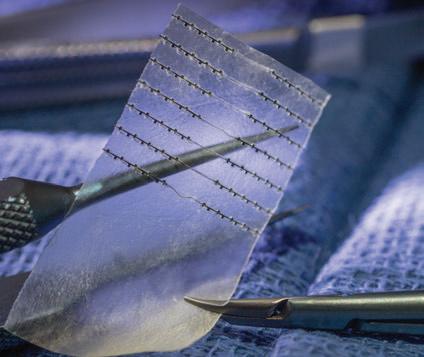


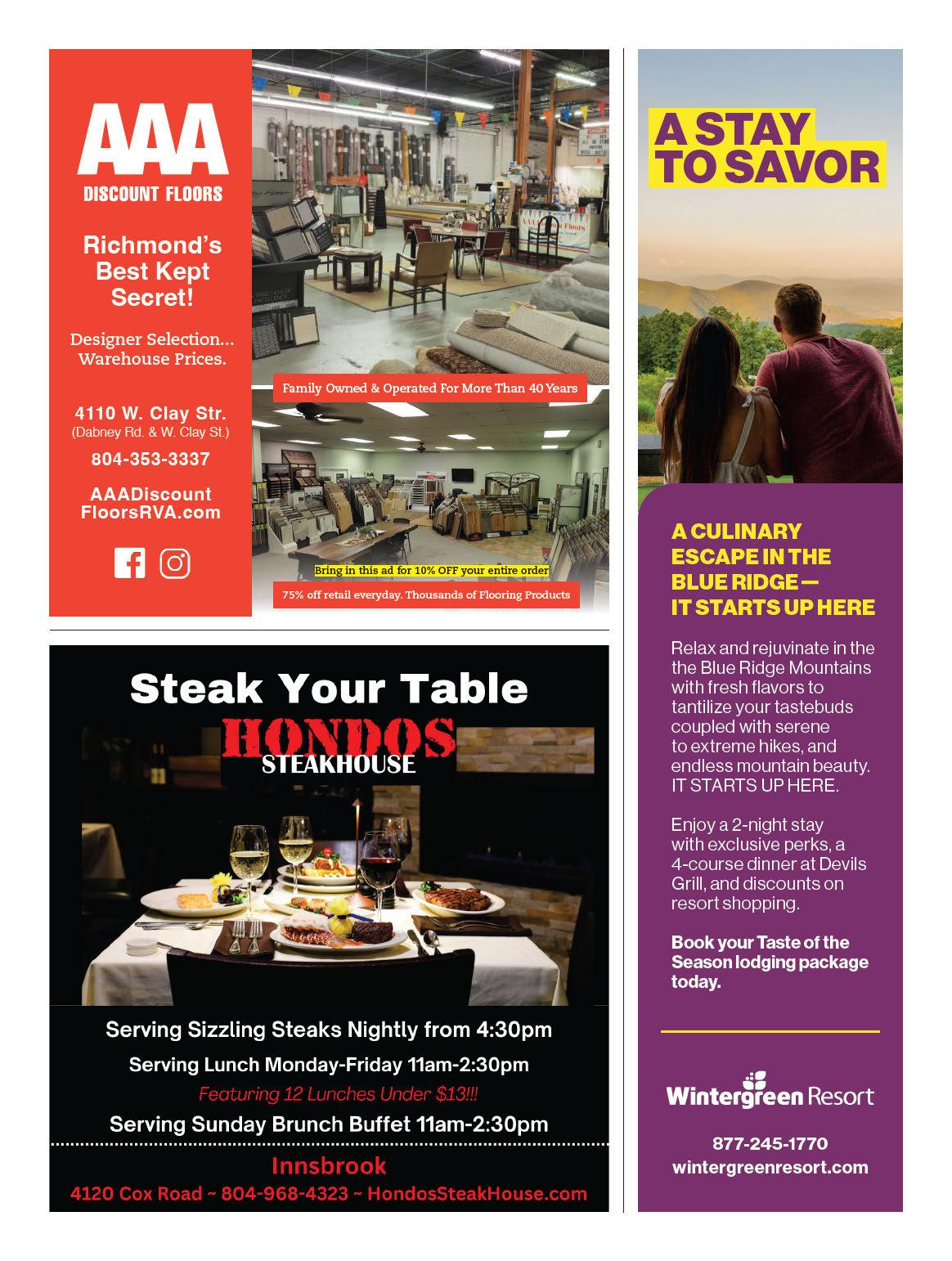
By Kaitlin Davis
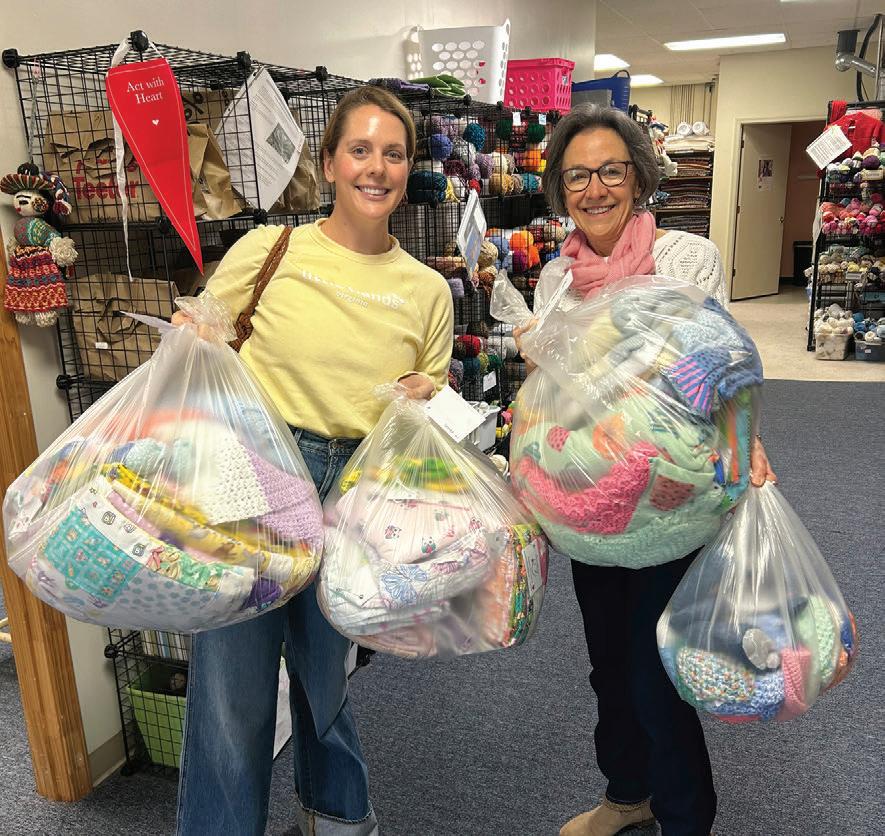
Every stitch in a handmade gi signifies love through a ention to detail — turning yarn and fabric into tangible reminders that no one should be forgo en in their time of need. In 2001, Richmonders Lois Moore and Dana Peterson started using their kni ing skills to share that significance with their community, soon spinning o the group into From the Heart Stitchers. e nonprofit organization brings cra ers together to make and distribute supplies, like mi ens, hats and blankets, to those in need. Since its inception, From the Heart has grown to nearly 2,000 volunteers across the Richmond metro area.
While the Richmond distribution site, located at 1114 Westbriar Drive, is the original and largest resource center, there are also locations in Fredericksburg, Williamsburg and Dinwiddie. Together, these facilities distribute anywhere between 600 and 900 handmade items per week.
“[Our volunteers] sit down and create these items, knowing that they’re going to go to someone in need — and it amazes me, some of the beautifully knit items that come in,” says Susan Rickman, the vice president and distribution coordinator for From the Heart. “ ey will do gorgeous cabling and very intricate designs. It may have taken them weeks to complete that one item, and then
they give it away. And that’s dedication, that’s love for fulfilling wishes and love for other people.”
From e Heart recently hit a major milestone: over 600,000 items cra ed and donated since their founding. ese lovingly made creations include chemotherapy hats for cancer patients, knit caps for premature babies, warm mi en sets for the homeless and other items designed to meet specific needs.
e organization calls on their volunteers via weekly newsle ers to create goods based on requested items from partner organizations. ey can either use materials provided by From the Heart or purchase their own, but in the end, they drop o their items to be bagged and distributed to recipients such as Li le Hands Virginia, a nonprofit providing necessities to families with children up to 3 years old.
“[Our partnership] has been so impactful,” says Margaret Long, program director at Li le Hands. “We get feedback from the families that we serve, that they do really appreciate those special, li le, thoughtful touches, and to have something that was made just for them.”
Since Li le Hands serves about 250 families monthly, Long says it used to be di cult to fulfill requests that included items such as blankets, because most of their donations are secondhand. Within weeks of becoming partners, From the Heart filled a majority of Li le Hands’ donation requests.
“It’s a gut-wrenching feeling to have a child request a blanket and not be able to provide it,” Long says. “Now, we’re overflowing with blankets, and it’s really, like, the best problem to have.”
e nonprofit welcomes all to help out; no experience is required, thanks to workshops hosted on an as-needed basis throughout the year. For those without the cra ing skill, volunteers can contribute their time to packing and distributing goods. R


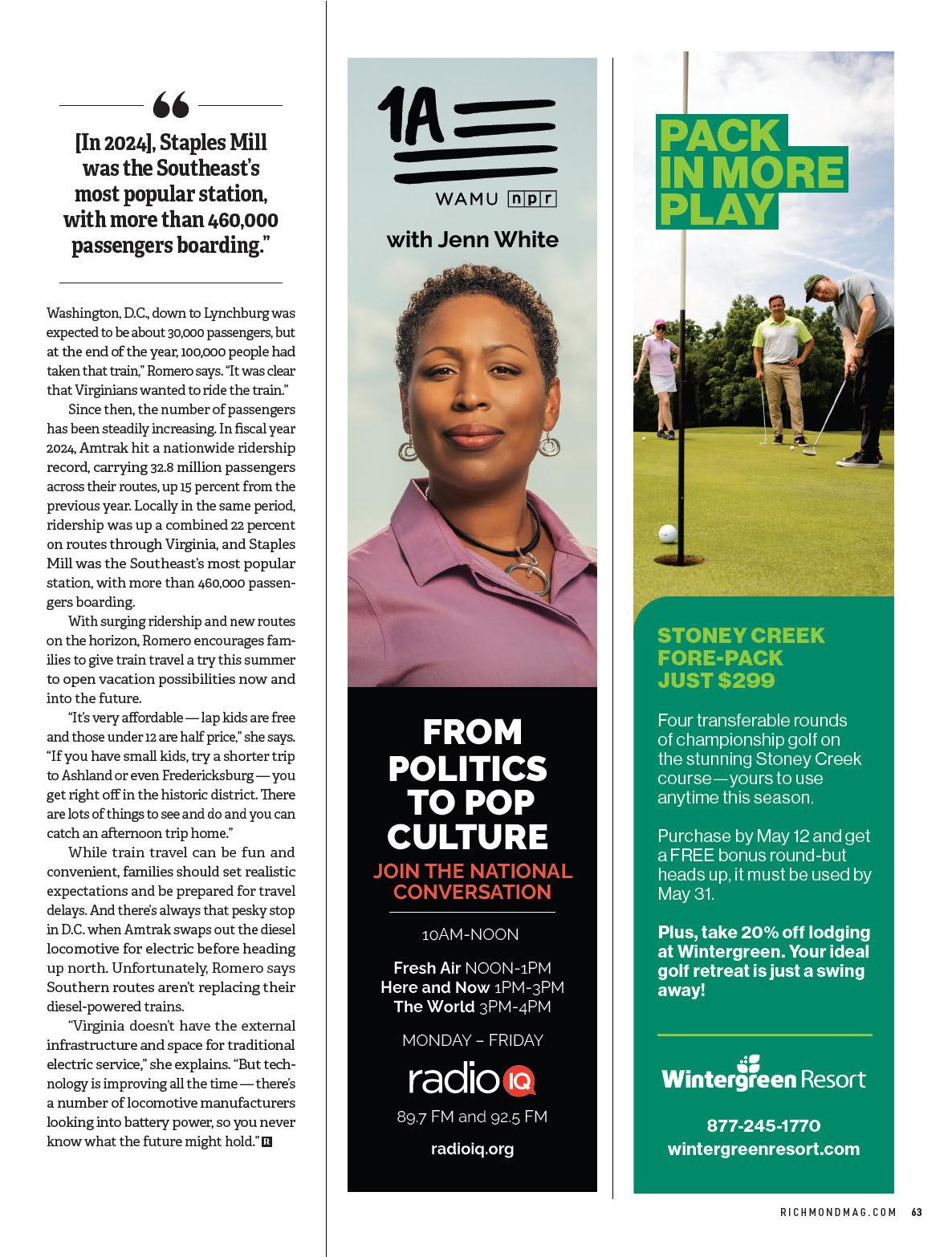




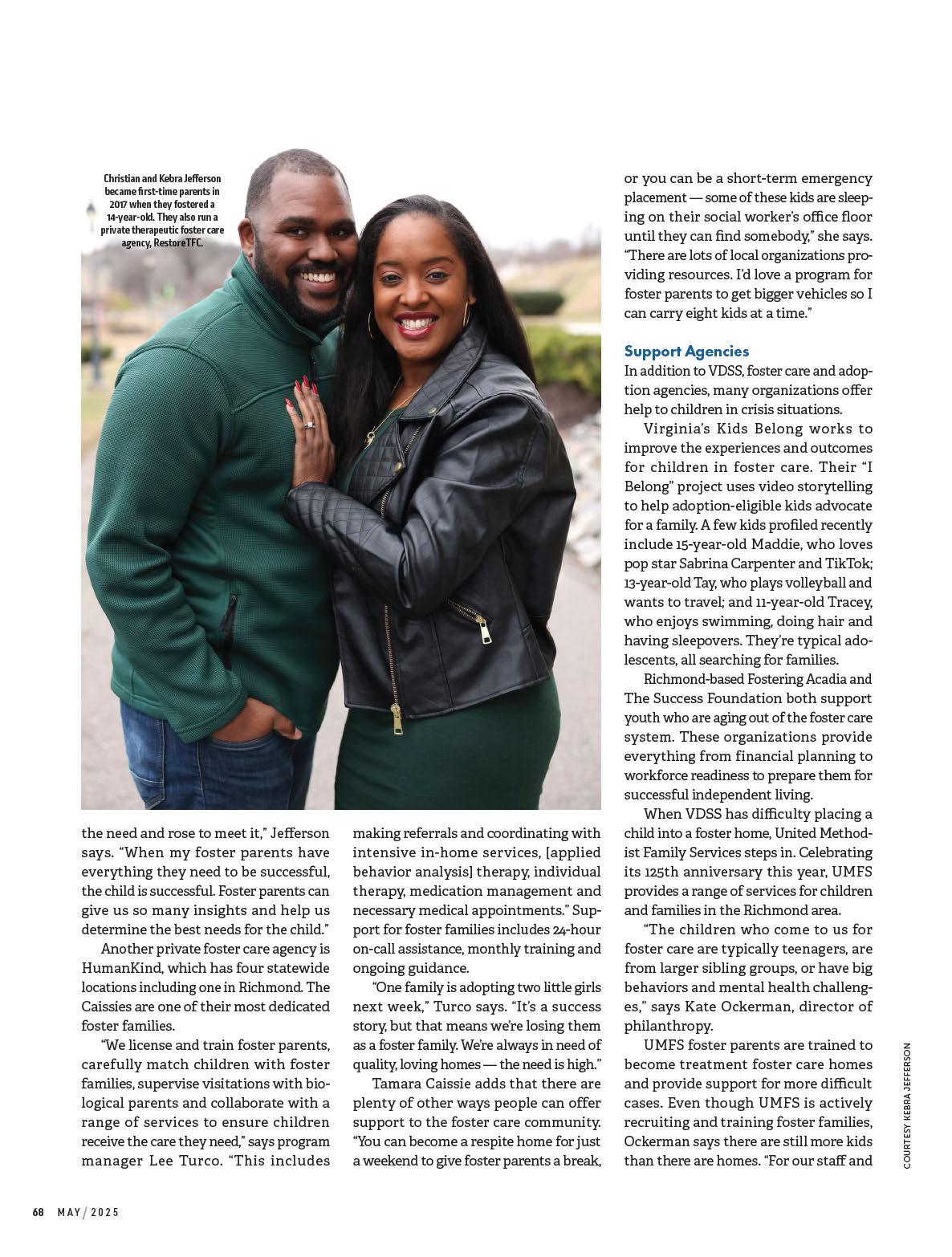


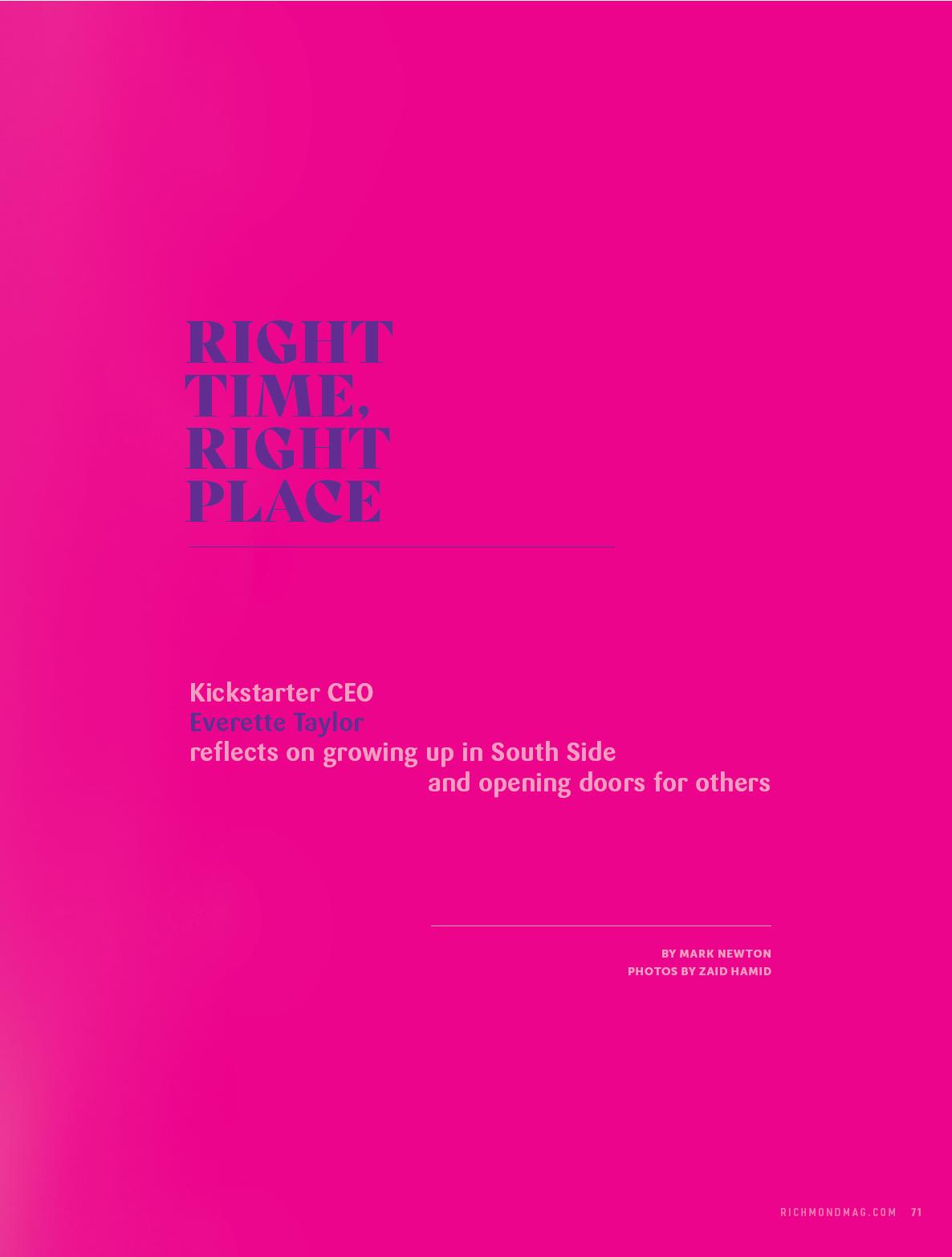
says his journey from South Richmond to New York City, where he has led the crowdfunding site Kickstarter since 2022, has been paved with kindness.
“It’s something that has absolutely changed my life,” the 35-year-old CEO says, emphasizing that one must also pay that kindness forward. “I really do believe it returns it back into your life.”
Taylor’s life story touches on the reality of growing up in Richmond in the ’90s, the importance of community and public places, how to succeed and how to create opportunities for others along the way. And on May 10, he will summarize that journey for Virginia Commonwealth University students as the commencement speaker at their graduation.
“It’s such a surreal moment for me because I grew up 10 minutes away on the south side of the city ... but my whole life has been about doing things that weren’t imaginable for people coming from my background and my situation, and that’s the thing that keeps me going and inspires the work that I do at Kickstarter every single day.”
Taylor has been an entrepreneur from the start. Born in 1989, he grew up in the Broad Rock neighborhood in South Side with his younger sister, Erika, and mother, Millicent, a custodian at the Federal Reserve Bank of Richmond.
“She worked nights,” he recalls, “and so I grew up really having to take care of myself and figure things out for myself ... but growing up independent also meant that I spent a lot of time out in the streets.”
Richmond wasn’t an easy place to be at that time. In the ‘90s annual homicides hit triple digits, causing the city to be dubbed the murder capital of America in 1997. Police at the time a ributed the violence to the preva -
lence of crack cocaine.
“Most of the men in my family were in jail, on drugs, caught up in the wrong things, and those are the things that I saw around me in Richmond,” Taylor says. “And I knew that, as a young kid, I was impressionable. So, some of the people that I saw with the most things, like the nice cars and the Jordans and the jewelry, they were dealing drugs, and they were doing things that they shouldn’t have been doing.”
One of his first entrepreneurial endeavors involved buying bubble gum from a corner store and selling it to his fellow students at a markup. Taylor also mowed lawns with his cousin. “We were always trying to find different ways where we could hustle and make a li le bit of money for ourselves,” he says. “... I wanted enough money to be able to take care of myself and to be able to get things from the store, do things that I wanted to do as a kid,” which included fueling an early interest in the arts.
By the time he was in middle school, however, Taylor says he had fallen in with the wrong crowd and was selling marijuana. He credits his mom with pu ing him back on the straight and narrow. “I think that was scary for her,” he says, “because she saw what happened to other men in my family.” Part of that intervention was ge ing her teenager a job interview with Eastern National, a nonprofit that operates gi stores nationwide at public places such as the Richmond National Ba lefield Park. Taylor says her efforts and the job “genuinely saved my life.”
Taylor says he soon found himself in a room with Eastern National’s Robert Koch, who was looking for a new marketing and sales associate.
“I was a kid, 14 years old, from the streets of Richmond, and I knew nothing about marketing. I knew nothing about sales,” Taylor says. “... [H]e gave



the day: One day, we’ll all be working for this guy!”
Taylor’s first stint at Virginia Tech was rough.
“I wanted to build tech. I’ll be honest, I wasn’t the best coder or developer. I was decent,” he recalls about studying computer science. “I probably spent much too much time my freshman year — especially the first semester of my freshman year — partying. I had like a 2.0 GPA.”
By his second semester, he says he was “locked in” and his GPA and his horizons were expanding. However, a family situation forced him to drop out in his second year and return home. He found himself working in a Chesterfield County Jo-Ann fabrics store, w ondering if he was even making money a er gas and food.
His proclivity for throwing parties, however, was unimpeded. “That was what I was good at at the time,” he says.
It was in this context that he started his first business at age 19: EZ Events. “Not only did we throw parties” from Richmond to Greensboro, North Carolina, he says, “we built technology for people to buy tickets,” creating a kind of precursor to Eventbrite. In 2011, he sold the business and was able to return to Virginia Tech. “I didn’t make a ton of money,” he says, “but that was like my first big success as an entrepreneur.” He later learned the buyer of EZ Events sold the company again for “millions and millions of dollars.”
“That’s when I really started to learn about Silicon Valley,” he says. “I was like, ‘I need to leave Virginia.’” Two weeks later, he says, he le Blacksburg without a degree and drove to California.
Taylor quickly found himself under the wing of startup growth guru Sean Ellis, running marketing for one of Ellis’ businesses. He soon started several of his own ventures, such as the market-
ing firm Millisense, named for his mother, under ET Enterprises. His success drew the a ention of Sticker Mule, a custom decal company, which Taylor joined as chief marketing officer at 25 years old. He would go on to successfully manage marketing efforts for Artsy, a sales platform for fine art, which landed him on a Forbes list of the “World’s Most Influential CMOs” and led to a profile in the Financial Times. This buzz led Kickstarter to consider and then hire him as CEO in September 2022.
“I’m still surprised to this day that I got the opportunity, because I was a very unorthodox candidate,” Taylor muses. “Things moved very, very fast
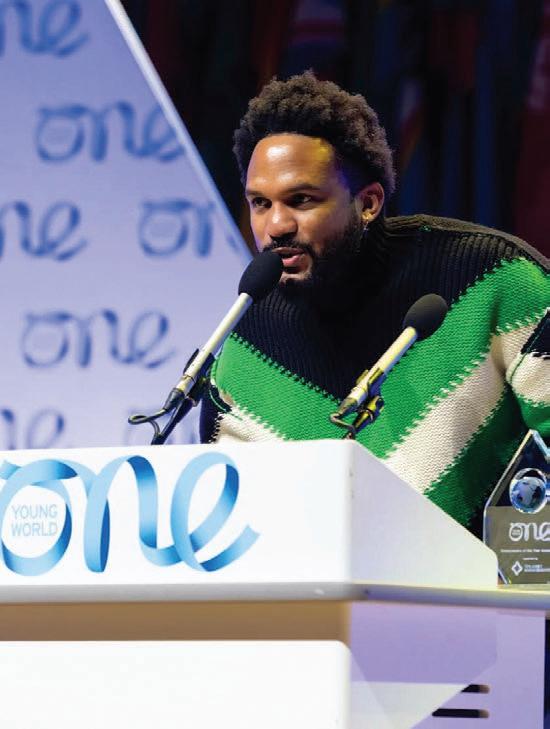

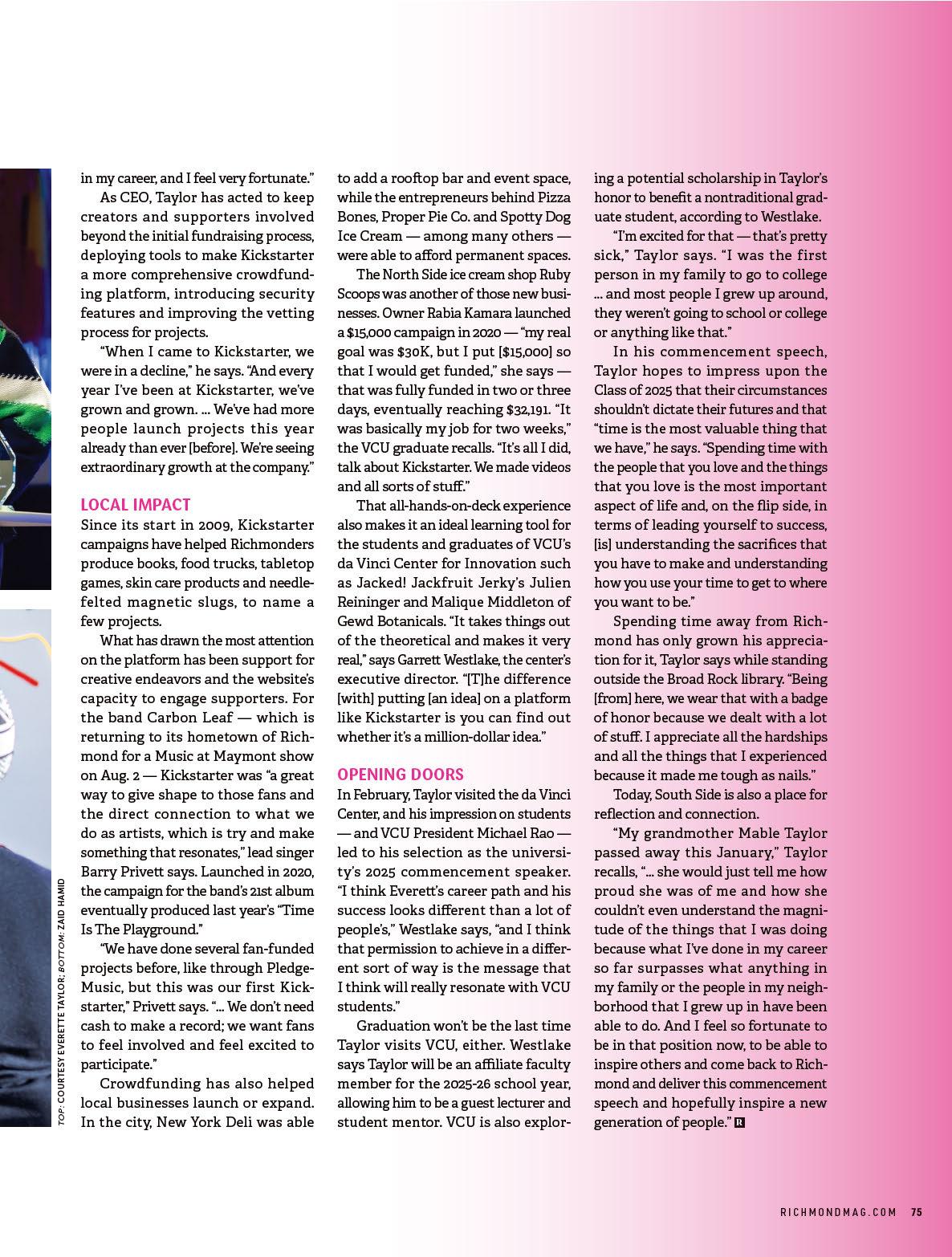
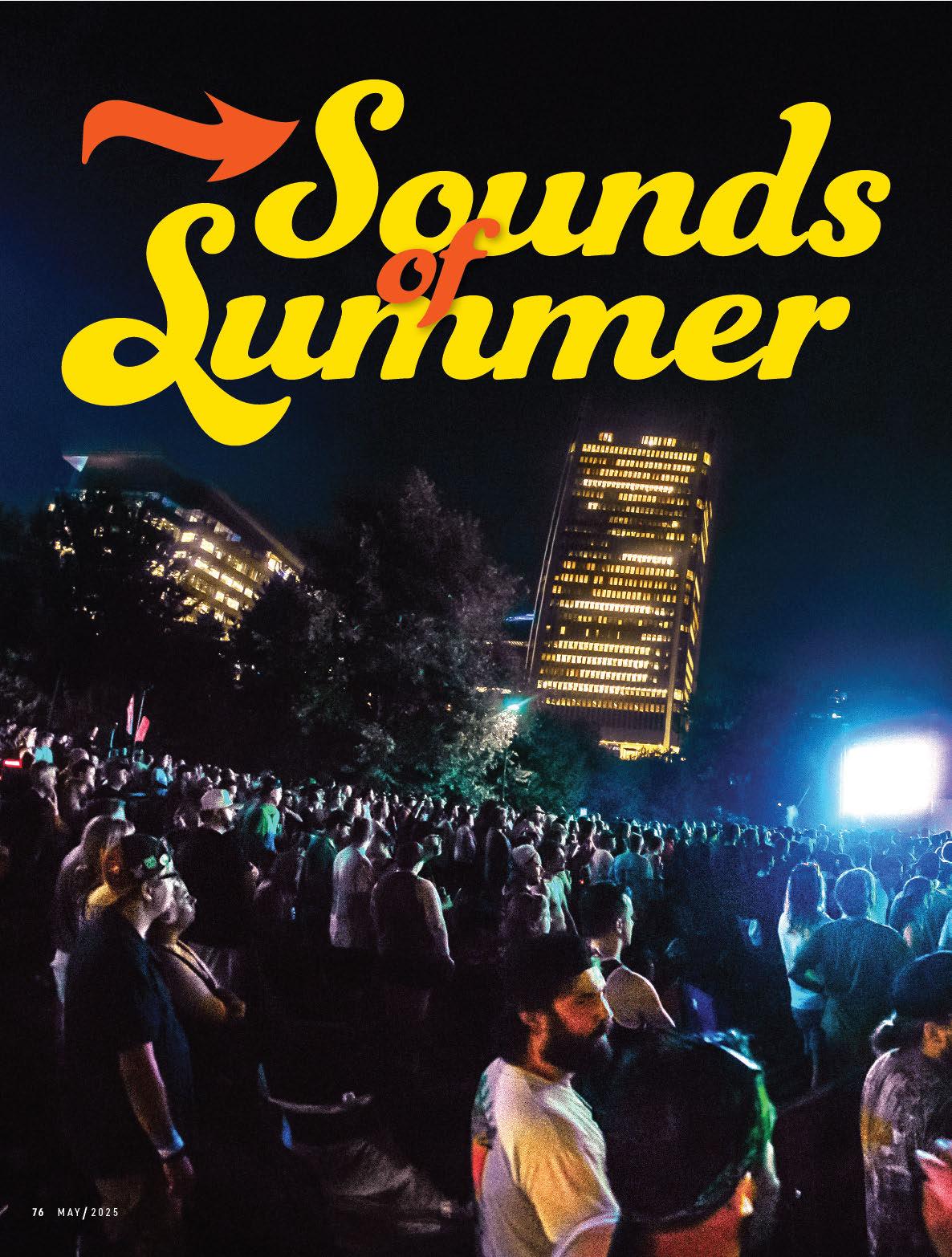

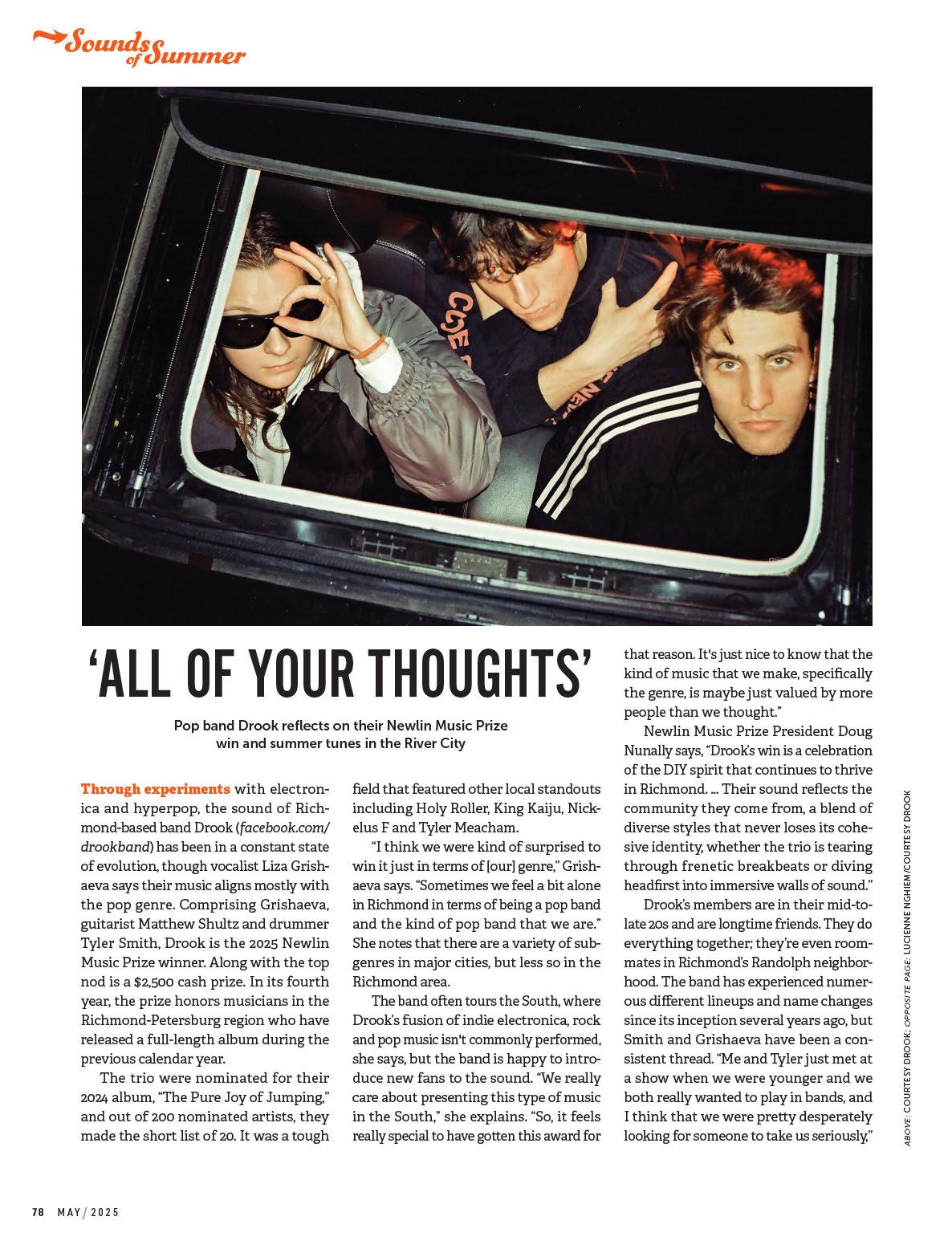
Grishaeva says.
In 2019, the band self-released their music under the name She. At the time, they were focused more on indie rock, but in 2022, they began developing their sound into what it has become today. They rebranded under the name Drook, which they sourced from Grishaeva’s 2018 solo EP, “Life In Estates” (which earned a 2023 Newlin Music Prize nomination). Drook’s 2023 album, “Mr. Fisher’s Dirty Club Mix,” showcased the group’s expansion into electronica. Their latest release, “The Pure Joy of Jumping,” is the culmination of their changing music style, with dreamy pop and electronic elements blended into rhythmic rock melodies.
“Our sound really changed when Matt came into the band because he has been working on a laptop since he was like 8 years old and he was just more skilled in electronic music,” Grishaeva notes. She says time off from performing and touring during the COVID-19 pandemic contributed to their evolved sound. “We got so much time to explore our sonic pale es, and we just were like, ‘Wow, we really gravitate to not only rock music and band music, but also electronic music.’ A lot of our influences are electronic musicians, and so COVID gave us time to be able to learn how to make electronic
music together.” Grishaeva names musicians including Aphex Twin, Radiohead, The 1975, Sophie and Charli XCX as inspirations for the band.
Grishaeva recommends that concertgoers look beyond the festivals for choice music at local venues such as The National and The Camel. She also mentions under-the-radar spots with pop-up performers. “I’m a bit more tapped into the local house show scene, but those houses are constantly changing, so what I would say is try to keep the everchanging houses on your radar,” she says.
Grishaeva also notes the importance of smaller stages in the development of budding local artists. Providing a platform and recognition for local musicians is part of the goal of the Newlin Music Prize.
“Presenting the Newlin Music Prize over the past four years has been a true honor, something made even more meaningful by the fact that it’s powered by the local community,” Nunnally says. “While peer recognition is powerful, the financial support we provide has become just as vital. As corporate monopolies continue to dominate streaming platforms and control access to live venues, opportunities for musicians have narrowed, making community-driven initiatives like this one more essential than ever.” —NC

6/7 The ’80s hitmaker Rick Springfield, with songs such as “Jessie’s Girl” and “Don’t Talk to Strangers,” brings his “I Want My ‘80s Tour” to the Allianz Amphitheater at Riverfront. The music begins at 7 p.m. and tickets start at $55 (VIP packages are available). allianzamphitheater.com
6/10 As part of the LiVE Loud concert series, indie rock band Wallows performs at Brown’s Island with special guest pop group Porches. Gates open at 6 p.m. Tickets start at $50 (VIP packages are available). thebroadberry.com
7/12 San Francisco rockers Counting Crows take the Allianz Amphitheater at Riverfront stage fresh o the release of their new album, “Butter Miracle, The Complete Sweets!” an extension of the band’s 2021 EP “Butter Miracle, Suite One.” The Gaslight Anthem kicks o the show at 7:30 p.m. Tickets start at $40 (VIP packages are available). allianzamphitheater.com
8/1 Grammy-winning singersongwriter and founder of Creedence Clearwater Revival John Fogerty brings his “The Celebration Tour” to Atlantic Union Bank After Hours in Doswell. 7 p.m. Tickets start at $49 (VIP packages are available). afterhoursconcertseries.com
8/20 California-based indie pop band Fitz and the Tantrums stops at Lewis Ginter Botanical Garden as part of the venue’s Groovin’ in the Garden series. 7:30 p.m. Tickets start at $38 (VIP packages are available). lewisginter.org
8/29 Bluegrass and country singer, fiddler, and music producer Alison Krauss is joined by her band, Union Station, and guitarist Jerry Douglas at the Allianz Amphitheater at Riverfront. The show begins at 7:30 p.m. Tickets start at $50. allianzamphitheater.com








